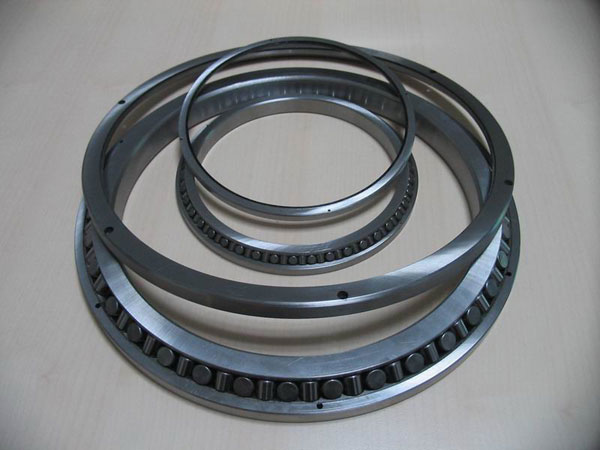Crossed Cylindrical Roller Bearing
Crossed cylindrical roller bearings can be made with a variety of cage materials. Typical cage materials are metal or plastic, and the choice depends on the application. Metal cages are less expensive than plastic cages and are generally more compatible with vacuum environments. Plastics are less stable in high temperatures and can cause problems with optics or electronics. Stainless steel cages can be advantageous for high-temperature applications and washdowns.

STUDROLLER eliminates cage creep
The STUDROLLER crossed cylindrical roller bearing has a unique anti-cage creep design. This patented feature prevents cage creep in vertical applications, where cage slippage is an issue. It also allows for vertical mounting without losing travel capacity. The STUDROLLER has been tested to endure hundreds of millions of cycles without failure.
Cage creep is a dangerous phenomenon, because it limits the range of movement. It also reduces the slide stroke. In addition, it causes the rollers to skid. This causes more friction, heat, wear, and torque. It can even lead to a torque spike near the end of travel.
High rigidity
The cross roller bearing is a new type of bearing with a high rigidity. Its slim design and small outer diameter make it suitable for small machines and applications. Its mounting holes enable it to be installed without fixing the flange or housing. Furthermore, it is suitable for applications with high torque. It has been proven to provide better performance and durability than double-row angular contact ball-type bearings.
The compact structure of the crossed roller bearing provides full line contact between rollers and raceway surfaces. The result is a high degree of rigidity that prevents deformation and increases precision. The high rigidity of this type of bearing also means that it can handle a wide range of load types, including radial, thrust and moment loads.
Low friction
Low friction crossed cylindrical roller bearings are suitable for applications with axial loads and high radial forces. They are especially useful for applications where the restraining torque and initial stress should be uniform. They are also suitable for applications requiring a high running accuracy. In contrast to conventional four-point bearings, these can handle speeds of up to 2 m/s.
The basic design of a cross roller bearing comprises an inner and outer supporting ring. Both ring surfaces have V-shaped grooves. The roll bodies are disposed in these grooves, at an angle of approximately 110 degrees. A retainer is provided between the inner and outer supporting rings to prevent the roll bodies from twisting.
Stability in a single-row space
Stability in a single-row space is an important aspect in the design and manufacture of SLF bearings. This bearing series has specific operating temperatures. Figure 3.48 illustrates the distribution of load between different bearing components. It is important to remember that the operating temperature limit of SLF bearings is not the same as the working temperature limit of a corresponding axial cylindrical roller bearing.
The cage material should be chosen based on the operational requirements of the roller bearing. It is also important to consider the dimensional parameters. In particular, the outward retention angle has the most effect on the push-out force. However, a deep lube groove can reduce the effect of the retention angle. This, in turn, reduces the deviation in force measurements.
Application
The global crossed cylindrical roller bearing market is divided into two distinct segments, namely direct channel and indirect channel. Of the two, direct channel held the largest share in the market in 2016, and is expected to continue to grow through 2020. Direct channel sales primarily reflect the demand for customised products among end users, which is further fuelling the segment's growth. At the same time, manufacturers are investing in digitalisation of their sales processes to improve their customer interactions. For example, IKO International has recently implemented an online chat-bot on its website to help its customers.
Applications of crossed cylindrical roller bearings include medical equipment, semiconductor processing, machine tools, clean rooms, and automation machinery. In the future, this bearing type will become even more common as technology demands greater precision in machines. Its cylindrical design allows it to be mounted along the carriage rail, and it is equipped with a cage that prevents the rollers from making contact with each other. As a result, this type of bearing is quiet and smooth, and does not cause vibrations or wear on other components.











